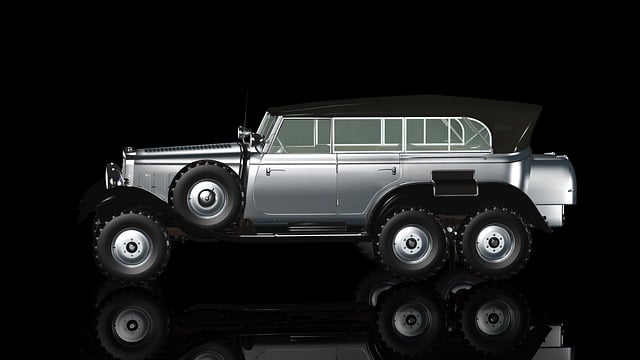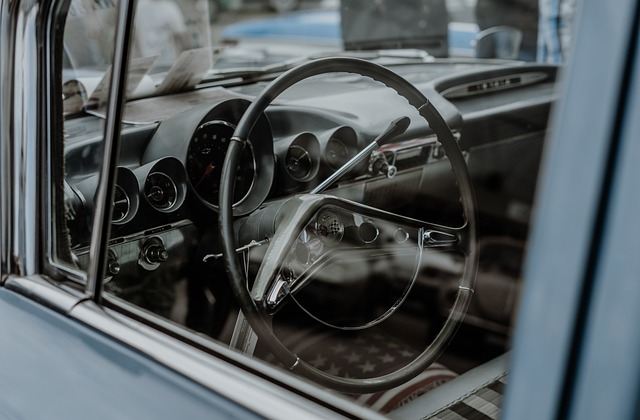When shipping classic or vintage cars, enclosed transport is recommended for superior protection from weather, debris, and vandalism, preserving their delicate finishes and rare parts. Open transport is more cost-effective but exposes vehicles to outdoor elements, increasing risks of damage or theft. Choosing the right carrier depends on vehicle condition, weather, and route safety; selecting a reputable shipping company ensures meticulous care during transit.
When shipping classic or vintage cars, choosing between enclosed and open transport is crucial. This decision impacts not just the vehicle’s safety but also its final condition. Enclosed carriers offer protection from weather and road debris, ideal for delicate classics. Open transport, though more affordable, exposes vehicles to environmental factors. Understanding the pros and cons of each method is essential for making an informed choice that ensures your cherished car arrives in top form. Dive into this comprehensive guide on shipping classic and vintage cars to navigate this decision effectively.
- Understanding Enclosed vs. Open Car Transport for Classics and Vintage Vehicles
- Pros and Cons of Each Transport Method: A Detailed Look
- Making the Right Choice: Factors to Consider for Safe Shipping
Understanding Enclosed vs. Open Car Transport for Classics and Vintage Vehicles

When it comes to shipping classic and vintage cars, understanding the difference between enclosed and open transport options is crucial. Enclosed carriers provide a secure and protected environment for vehicles, shielding them from direct exposure to weather conditions, road debris, and potential vandalism. This is particularly important for older cars, which often have delicate finishes, custom modifications, or rare parts that require extra care. Open transport, on the other hand, offers more visibility but exposes the vehicle to outdoor elements during transit.
For classic and vintage vehicles, enclosed shipping is generally recommended due to the heightened risk of damage from environmental factors. These specialized carriers are designed with climate-controlled environments, further minimizing the chances of paint chips, rust, or other deteriorations that can occur in open transport. By choosing enclosed shipping, car owners ensure their cherished classics and vintage cars arrive at their destination in the same condition they were picked up, preserving their historical value and aesthetic appeal.
Pros and Cons of Each Transport Method: A Detailed Look

Enclosed vs Open Car Transport: A Detailed Look at Pros and Cons
When it comes to shipping classic and vintage cars, enclosed transport offers superior protection against environmental elements like sun, rain, and extreme temperatures. This method is ideal for vehicles with delicate finishes, leather interiors, or custom modifications that require meticulous care during transit. Enclosed carriers also provide a secure, controlled environment, reducing the risk of theft or vandalism, which can be significant concerns for owners of valuable, rare, or unique cars.
On the other hand, open transport is more cost-effective and allows for easier access to the vehicle during shipping. It’s suitable for cars in good condition with robust exteriors that don’t require special protection. Open carriers offer full exposure to the elements and are generally faster and more efficient for bulk shipping of standard vehicles. However, this method poses higher risks from weather conditions, potential hazards on the road, and increased vulnerability to theft or damage without the extra security of an enclosed space.
Making the Right Choice: Factors to Consider for Safe Shipping

When considering shipping options for classic or vintage cars, making the right choice depends on various factors to ensure safe transport. Enclosed carriers offer a secure environment, protecting your vehicle from direct exposure to weather conditions and potential road hazards, which is ideal for delicate classics. On the other hand, open-air transport provides full visibility, suitable for more robust vintage models that can withstand varying weather.
Key considerations include vehicle condition, weather during transit, and route safety. For fragile classics, enclosed shipping guarantees a peaceful journey. Conversely, open transport might be preferable for well-maintained vintage cars capable of enduring potential exposure. Additionally, understanding the expertise and reputation of shipping companies is vital to ensure your classic or vintage car receives the care it deserves during transit.
When shipping classic or vintage cars, choosing between enclosed and open transport options depends on various factors. Enclosed carriers offer protection from weather and potential damage, while open transports provide better air circulation but less shielding. Considering the vehicle’s condition, route, and budget will help in making an informed decision to ensure safe shipping, preserving these cherished vehicles for future generations to enjoy.
